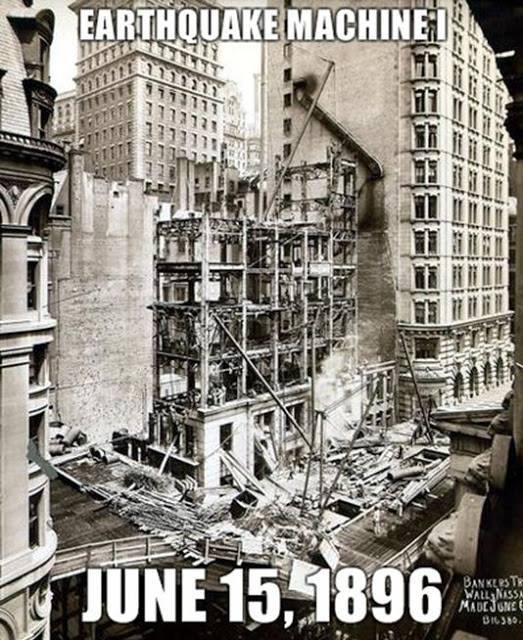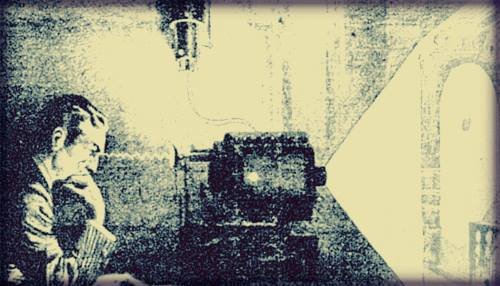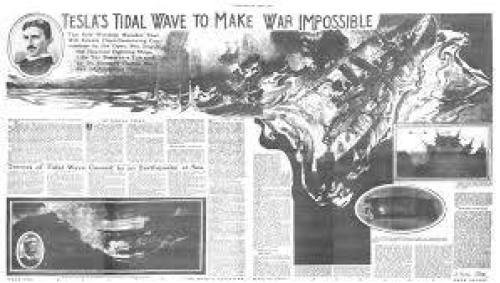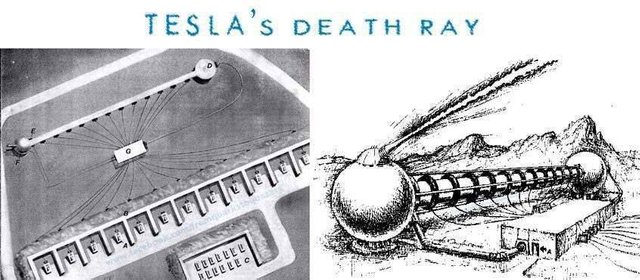Nikola Tesla, an American engineer and physicist, was a pioneer in radio, television, engines, robots and electricity, including widely used AC technology today, and suggested even more unusual ideas.
His next six visions of the future have yet to be realized, either because of technology constraints or to preserve markets.
1-Quake Machine

In 1893, Tesla obtained a patented mechanical steam oscillator that would vibrate up and down at high speeds to generate electricity.
Years after his patent was patented, he told reporters that one day when he was trying to control his mechanical oscillator, he shook his apartment building in New York City and shook the ground.
During the test Tesla was constantly increasing strength, and heard the cracking sounds, and said, "Suddenly, all the heavy machinery in the place were flying in the air." I grabbed a hammer and broke the machine.
Police and ambulances arrived at the scene to attend the chaos, but Tesla told his aides to stay calm and tell the police that an earthquake had just happened.
2-camera ideas

Tesla believes it is possible to visualize ideas. Inspired by his experiments in 1893, Tesla told a newspaper reporter decades later: "I have become convinced that any specific image formed in thought must be produced by the reflection of a corresponding image on the retina, which may be read by an appropriate device . "
The inventor depicts an image on an artificial eye retina, picks up a picture and drops the image on the screen. "If this can be done successfully, the things that any person imagines will be clearly reflected on the screen when it is formed," he said.
"In this way each idea can be read by an individual's thoughts, and then our minds will be like open books."
- Wireless power

In 1901, Tesla secured $ 150,000 from the JP Morgan financier to build a 185-foot-long mushroom-shaped tower on the northern shore of Long Island capable of transmitting messages, telephone communications and images to ships at sea and across the Atlantic Ocean using land to make signals.
Work on the structure began, the Wardencliffe tower was called, and Tesla wanted to adapt to allowing wireless power to be delivered. Through his experiences on radio and microwave, he thought he could light New York City by moving millions of volts of electricity through the air.
Morgan, however, refused to give Tesla any additional funding for his grand scheme. (Some believe that Morgan cut off the money as soon as he realized that the Tesla plan had affected his other assets in the energy sector).
Tesla abandoned the project in 1906 before it became operational, and the Wardencliffe Tower was dismantled in 1917.
4-wave artificial tide

The engineer and physicist believe that the power of science can be harnessed to prevent war. In 1907, New York reminded the world of another invention of Tesla's military innovations where the Lyselic cables could lead to high-explosive explosions at sea and thus generate large-scale waves so that they would overtake entire enemy fleets.
The artificial tidal wave "will make the navy useless, like the paper boats used by children in bathtubs," the paper said.
5 - the fastest air-balloon and electric powered

Since Tesla was a boy, he was fascinated by the idea of flying. By combining his knowledge of MEP, he began to think more about flying after Wardencliffe failed.
In an article published in the magazine "Reconstruction" in July 1919, Tesla discussed his work on the development of a supersonic aircraft that could travel eight miles above the surface and generate speeds that allow passengers to travel between New York City and London within three hours.
The concept of Tesla aircraft is to be supported by a power card transmitted wirelessly from power plants on the ground, eliminating the need for aircraft to transport fuel.
"The energy supply is practically unlimited, since any number of power plants can be operated together and energy is provided for the airship, as trains running on the tracks are now powered by wires or wires," Tesla said in the article.
6-beam death

Tesla's creative mind continued to invent new insights even in his late life. On his 78th birthday, he told The New York Times that he had come up with this most important invention, an invention that would "cause armies of millions to die in their tracks."
This invention is a military weapon that will accelerate the mercury particles by 48 times the speed of sound inside a vacuum chamber and launch a high-speed beam "through free air, from this enormous power that will [fall] a fleet of 10,000 enemy aircraft at a distance of 250 Mile ".
Although the press described it as a "ray of death," Tesla believes it is a "ray of peace" that would thwart attacks by aircraft, invade armies and save lives by acting "like the Chinese wall hidden, only a million times more vulnerable to penetration." Tesla gave his arms to many governments, including the United States, but the only country that showed interest was the Soviet Union, which conducted a partial test in 1939.
If we are to teach real peace in this world, and if we are to carry on a real war against war, we shall have to begin with the children.
- Mahatma Gandhi
Downvoting a post can decrease pending rewards and make it less visible. Common reasons:
Submit
Tesla was a great man!
Downvoting a post can decrease pending rewards and make it less visible. Common reasons:
Submit